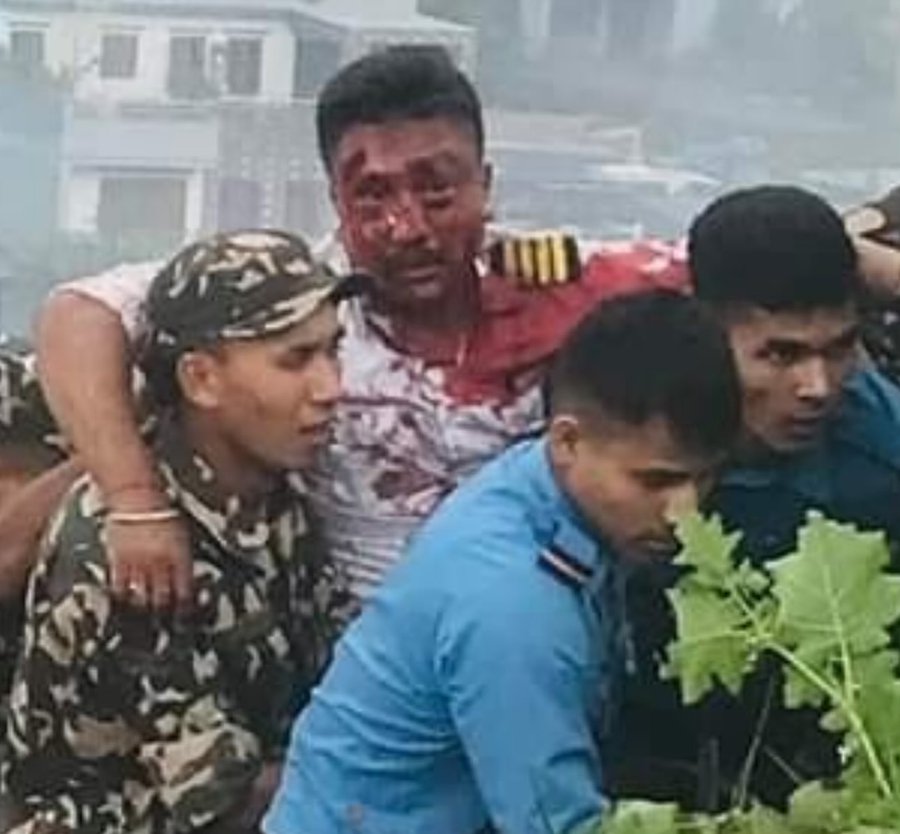By: Group Captain (Dr) MJ Augustine Vinod (Retd)
The dawn of July 24, 2024, brought an unimaginable tragedy for Nepal. A Saurya Airlines aircraft, on a repositioning flight from Kathmandu to Pokhara for technical inspection, met with a catastrophic accident shortly after takeoff from Tribhuvan International Airport (TIA).
This tragic event has not only plunged the nation into mourning but also raised critical concerns about aviation safety and the need for stringent measures to prevent such disasters in the future.
The Fateful Flight
On that ill-fated morning, the Saurya Airlines Bombardier CRJ-200 aircraft took off at 9:15 AM, carrying 19 passengers and crew members.
The weather was reported to be clear, and the flight was expected to be smooth. However, mere minutes after takeoff, disaster struck. Eyewitnesses described seeing the aircraft struggling to gain altitude, tilting erratically before it nosedived into a ditch area near the airport.
New CCTV captures moment of the Saurya Airlines CRJ-200 crash in Nepal on Wednesday. The pilot was the only survivor of the 19 people on board. https://t.co/oGmw8kp0VQ pic.twitter.com/cerfbK2N0p
— Breaking Aviation News & Videos (@aviationbrk) July 26, 2024
The impact was devastating. The crash site quickly turned into a scene of chaos and destruction, with rescue teams and local residents rushing to aid. Despite their valiant efforts, the intense fire fueled by the aircraft’s fuel made it almost impossible to rescue anyone.
The flames engulfed the wreckage, leaving little hope for survivors. Except for the captain, nobody survived.
Immediate Response & Rescue Efforts
Rescue operations were initiated immediately, with the Nepalese Army, local police, and fire services converging at the crash site.
The crash’s proximity to the residential area complicated the efforts, as firefighters struggled to control the blaze and prevent it from spreading to nearby homes.

Medical teams set up makeshift triage centers to assist injured residents and address the immediate needs of the affected families.
Despite the swift response, the grim reality soon became apparent. All souls on board except the Capt perished, marking one of the deadliest aviation disasters in Nepal’s history.
Investigating the Cause
The Civil Aviation Authority of Nepal (CAAN) promptly initiated an investigation to determine the cause of the crash. Preliminary reports suggested a possible technical malfunction, including loss of power leading to an aerodynamic stall. Some eyewitnesses reported seeing flames coming from one of the engines before the crash.
The aircraft’s black box, recovered from the site, was sent for detailed analysis, which is expected to take several months.
Experts have pointed out that while the CRJ-200 is a reliable aircraft, it is imperative to scrutinize its maintenance records and operational history.
The investigation will also examine the crew’s training and experience, the airline’s safety protocols, and the overall regulatory oversight of the aviation industry in Nepal.
Human Stories: Loss & Mourning
The human toll of the Saurya Airlines crash is immeasurable. Families lost loved ones, communities lost friends and neighbors, and the nation lost its peace of mind.
Among the victims were business travelers, tourists, and local families. The grief was palpable as families gathered at the airport and hospitals, hoping against hope for any news of survivors.
Aviation Safety In Nepal: A Persistent Challenge
Nepal’s aviation sector has faced numerous challenges over the years. The country’s rugged terrain, unpredictable weather, and limited infrastructure make flying inherently risky. Tribhuvan International Airport, the primary gateway to Nepal, has seen its share of incidents, and this latest tragedy underscores the urgent need for reforms.
Nepal has previously been scrutinized by international aviation bodies, including the International Civil Aviation Organization (ICAO), for its safety standards. While steps have been taken to improve the situation, the Saurya Airlines crash highlights that much more needs to be done.
A Nation In Mourning
The Saurya Airlines crash has cast a long shadow over Nepal. As the nation grapples with the loss, vigils, and memorial services have been held across the country.
Citizens have come together to express their solidarity and support for the grieving families. The outpouring of empathy and compassion is a testament to the resilience and unity of the Nepalese people.
Moving Forward: Lessons and Hope
The Saurya Airlines crash is a somber reminder of the critical importance of aviation safety. It underscores the need for continuous improvement, vigilance, and commitment to the highest standards of safety.
For a country like Nepal, where aviation is a vital lifeline connecting remote regions, ensuring the safety of every flight is paramount.
Investing in technology, enhancing training programs, and strengthening regulatory frameworks are crucial steps towards achieving this goal. The tragedy should serve as a wake-up call for all stakeholders in the aviation industry to work together to create a safer and more reliable aviation environment.
Conclusion
The crash of the Saurya Airlines flight in Kathmandu on 24th July 2024 is a heart-wrenching tragedy that has deeply affected the nation.
As Nepal mourns the loss of precious lives, it is imperative that the lessons learned from this incident lead to meaningful changes in the aviation sector.
By addressing the underlying issues and committing to stringent safety standards, Nepal can honor the memory of those who perished and ensure that their loss was not in vain.
The path to safer skies is fraught with challenges, but with collective effort and unwavering resolve, it is a journey that must be undertaken.
- Group Capt MJ Augustine Vinod VSM (retd) is COO, AutoMicroUAS. The views expressed in the above piece are personal and solely those of the author. They do not necessarily reflect the EurAsian Times’ views.
- He tweets at @mjavinod